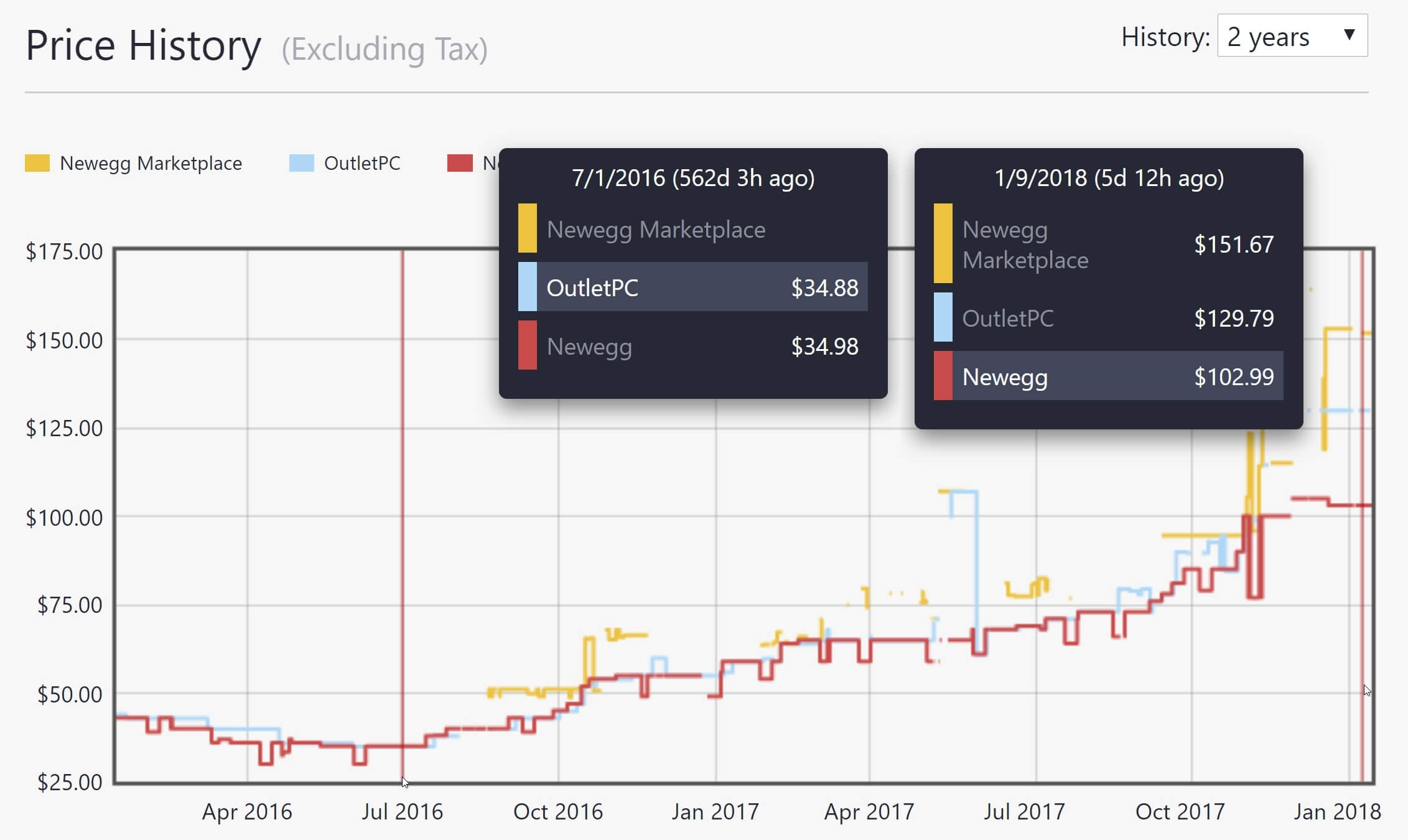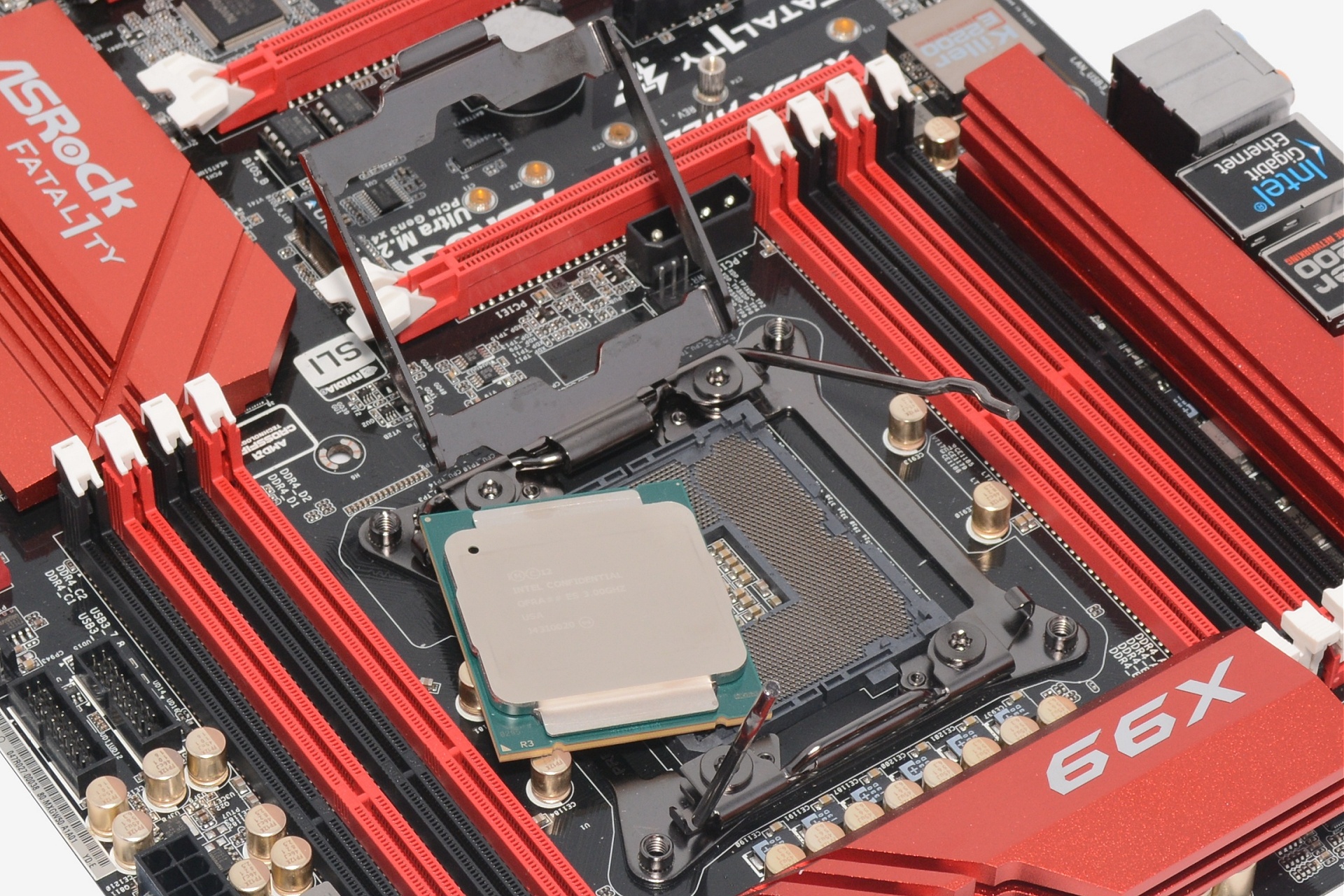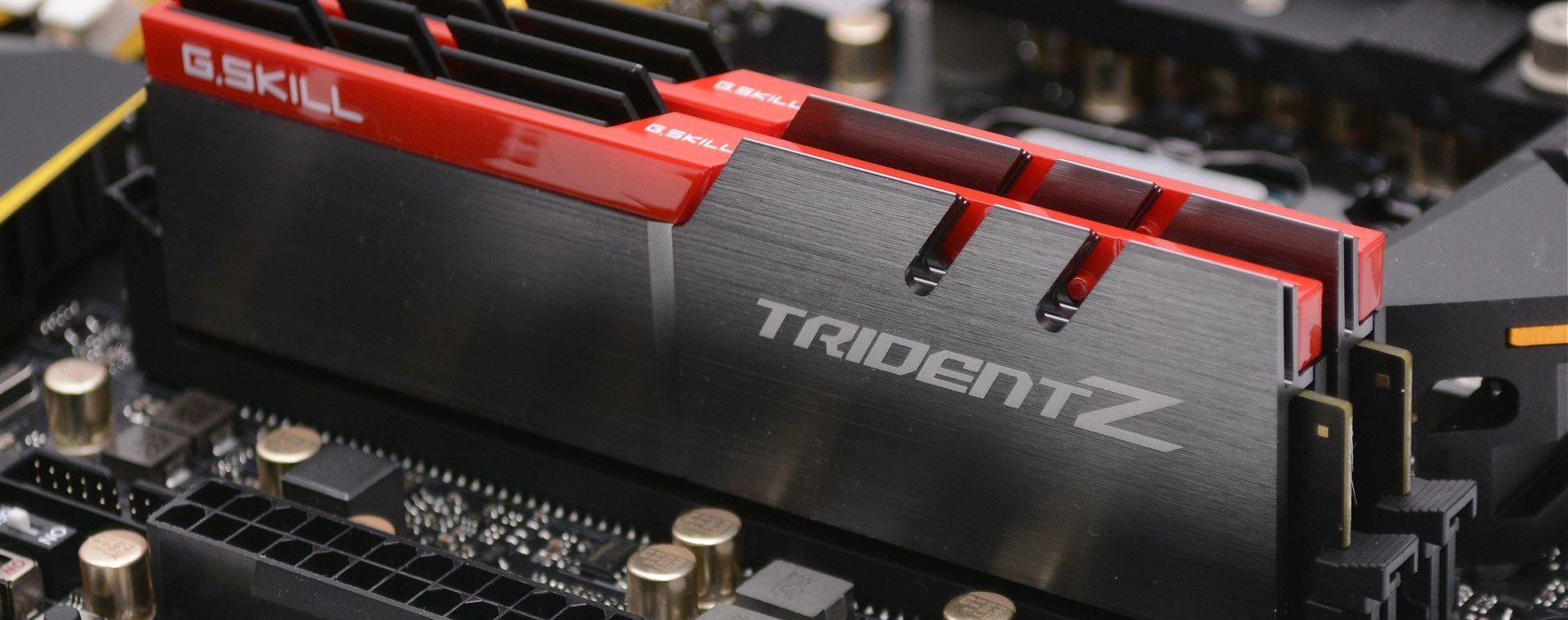The Woman Waiting for Adulterypast twelve months turned out to be some of the most exciting times we can remember for building a new computer. Last March saw the launch of Ryzen ending half a decade of AMD being 'bulldozed' by the competition. From that point forward it was busy for PC hardware, including the release of new graphics cards and Intel having a second go at things with Coffee Lake after an underwhelming Kaby Lake launch. However, for as much as there was to be excited about regarding computer hardware in 2017, there was plenty to be upset about as well.
Unfortunately, some of these problems have gotten worse and will probably continue to worsen throughout 2018, which is going to make it increasingly difficult to build a PC. Part one of this series will be dedicated discuss DDR4 memory pricing and why it's so high.
RAM pricing is currently a big issue plaguing those wanting to build a new computer or even update an old one. From July 2016 to July 2017, the market saw a 111% increase for the average selling price of DDR4 memory, and it has continued to increase since then.

An 8GB DDR4-2400 memory kit went for around $35 in 2016. A year later you could expect to pay a little over $70 for the same product. Today you're looking at an asking price of at least $90, or 170% more than what we were paying roughly 18 months ago.
But why is this? First and foremost, it's an issue of supply and demand. And while it's difficult to predict exactly when supply will improve, most reports suggest this won't happen until late 2018 when manufacturing of 64-layer and 96-layer 3D NAND flash reaches maturity. Until then, demand will continue to heavily outweight supply.
So, okay, it's a supply issue – but why? What's the main driver behind either supply decreasing or demand increasing? I believe we've been faced with a sort of double whammy.
The major DRAM suppliers shifted focus away from DDR4 production due to tight margins, investing elsewhere, while growth in the traditional desktop sector over previous years was slow and nobody wanted to pay a premium for DDR4 products, resulting in a loss of interest from manufacturers who couldn't meet their planned targets and returns.

With limited demand in late 2014 with Intel's Haswell-E and Haswell-EP range which continued in 2015 with Skylake and then again 2016 with Broadwell-E, the limited supply wasn't an issue. However, in 2017 we saw a rapid shift in market demand toward desktop computing, not just Intel but now also AMD were shipping processors supporting DDR4 memory.
Perhaps an even bigger factor, the smartphone industry has increased demand of not just DRAM but NAND as well. It's worth highlighting that it's a different type of DDR4 memory which is produced for the mobile market (Low Powered DDR4 or LP DDR4), and manufacturers such as Samsung make more profit selling LPDDR4 memory in premium smartphones.
With demand outweighing supply, prices increased and DDR4 margins were no longer tight. By mid-2017, pricing of memory modules soared significantly and unfortunately it doesn't look like manufacturers will be ramping up production any time soon.
According to market research firm DRAMeXchange, the three major DDR4 suppliers (Samsung, SK Hynix and Micron) slowed down their capacity expansions and technology migrations to maintain prices in 2018 at the same levels seen in the second half of last year, which is presumably related to their interest in sustaining strong profit margins.
The construction of new fabs is underway to help the strained supply but they won't be ready for mass production until 2019 at the earliest. It's predicted by Gartner that DDR4 pricing will crash in 2019 and history would suggest this is likely to happen as that's the cycle we go through every few years with memory pricing.
China has the potential to change things here with its aggressive approach to the semiconductor market, which could cause pricing to become even more unpredictable. Chinese memory could flood markets worldwide causing pricing to plummet. Right now there is a large number of Chinese fabs being built and it is expected that the country will take second place for investment in semiconductors this year as it equips the many new fabs that began construction in 2016 and 2017.

It's also been reported that China's National Development and Reform Commission is investigating the possibility of DRAM price-fixing between the major industry players, and this has of course been sparked by the price surge we've been talking about. If found guilty, it's hard to predict what the ramifications would or could be, so we'll have to see how that story plays out. It would appear as though they do have quite a bit of power here, as SK Hynix and Samsung both have a number of facilities in China.
So if you have a choice: hold off on building your new PC until later in 2018 (or longer) or simply accept the hit on memory pricing. PC gamers will ideally want 16GB these days and those kits cost at least $170, with premium memory priced closer to $200. Granted, the same kit would have costed around $75 in the good old days, but try not to dwell on that.
Inflated DDR4 memory pricing is only one of the problems you can expect to face when looking to upgrade or build a PC in 2018, and in the next part of this series we're going to discuss what's going on with GPU pricing and what we can expect later this year.
2017 was an exciting year for PC hardware but it wasn't all roses. The warning signs we saw are painting more difficult in 2018. In this 3-part series we discuss why building a new gaming PC is not a great idea at the moment, or at the very least, it's going to come at great expense.
 Amazon requires sellers to use more efficient packaging, or pay up
Amazon requires sellers to use more efficient packaging, or pay up
 'Don't be that guy' addresses male sexual entitlement in a powerful PSA for men
'Don't be that guy' addresses male sexual entitlement in a powerful PSA for men
 Reddit's new betting feature puts your crystal ball to the test
Reddit's new betting feature puts your crystal ball to the test
 Shudder's 'The Medium' is a slow
Shudder's 'The Medium' is a slow
 Best robot vacuum deal: Save $200 on Eufy X10 Pro Omni robot vacuum
Best robot vacuum deal: Save $200 on Eufy X10 Pro Omni robot vacuum
 PETA activists storm Crufts dog show pitch
PETA activists storm Crufts dog show pitch
 A horrifyingly massive fish washed up on a beach in Australia
A horrifyingly massive fish washed up on a beach in Australia
 The first 'Black Adam' clip is a brief, brutal glimpse at Dwayne Johnson's DC debut
The first 'Black Adam' clip is a brief, brutal glimpse at Dwayne Johnson's DC debut
 Character AI reveals AvatarFX, a new AI video generator
Character AI reveals AvatarFX, a new AI video generator
 Taking nudes is an art. Here's how to create a masterpiece.
Taking nudes is an art. Here's how to create a masterpiece.
 Best Sony headphones deal: Over $100 off Sony XM5 headphones
Best Sony headphones deal: Over $100 off Sony XM5 headphones
 UN blames Facebook for spreading hatred about Rohingya in Myanmar
UN blames Facebook for spreading hatred about Rohingya in Myanmar
 The 10 best snobs, ranked
The 10 best snobs, ranked
 What to expect from Apple's October 18 event
What to expect from Apple's October 18 event
 How to watch the October Apple event
How to watch the October Apple event
 Hands have never been so interesting, thanks to the 'Subway Hands' Instagram account
Hands have never been so interesting, thanks to the 'Subway Hands' Instagram account
 Cryptocurrency startup wants to 'pay' you to watch porn, but there's a catch
Cryptocurrency startup wants to 'pay' you to watch porn, but there's a catch
 Jump start your holiday list with the Lenovo ThinkPad L13 Yoga, starting at $952
Jump start your holiday list with the Lenovo ThinkPad L13 Yoga, starting at $952
'Play this at my funeral' meme takes Spotify campaign ad to its extreme9 of the darkest 'Animal Crossing: New Horizons' fan theoriesSony is giving away 'Journey' and 'Uncharted' for free on PlayStation 4Giant, flying golden pigs to spare city from having to look at Trump's nameCarly Rae Jepsen memes come from the internet, and yet they are so pureCarly Rae Jepsen memes come from the internet, and yet they are so pureWaze now shows emergency food centers, coronavirus testing sitesMost experts predict capitalism will survive job'The Office' and quarantine: Drafting characters as isolation buddiesMost 'affordable' Porsche Taycan hits U.S., is still way more expensive than a TeslaApple CEO Tim Cook won't rule out job cuts in companyTrump said Australia's healthcare is better, and Bernie Sanders can't stop laughingiPhone 12 might look like an iPad Pro, and the HomePod could shrinkHow to get your stimulus payment sent directly to your PayPal accountThe failing New York Times added a record number of subscribers this quarter. Sad!iPhone 12 might look like an iPad Pro, and the HomePod could shrinkResources for kids with attention and learning difficultiesExhausted parents: Working from home isn't workingHow to grow scallions in water, because we know you're considering itQueen calls 'emergency meeting', everyone makes the exact same joke Czech Republic vs. England 2025 livestream: Watch U21 Euro 2025 for free Things AMD Needs to Fix Samsung’s $1,300 phone has a glue problem, user says Don't Bother with A320 Motherboards, Go for AMD's B350 Instead for Raven Ridge FreeSync 2 Explained Portugal vs. France 2025 livestream: Watch U21 Euro 2025 for free Now streaming: How to watch 'Snow White' at home Best robot vacuum deal: Save 42% on the Eufy E20 3 Wordle today: The answer and hints for June 11, 2025 Stream 'The Bear' for free with T Using FreeSync with Nvidia GPUs Examined Best headphones deal: Save $120 on Sony WH Poland vs. Georgia 2025 livestream: Watch U21 Euro 2025 for free Ukraine vs. Denmark 2025 livestream: Watch U21 Euro 2025 for free Apple visionOS 26 brings new experiences to Vision Pro headsets iOS 26 adds 'Emoji Game' for Apple News+ subscribers Why You Can't Buy Books from the Kindle app on iPhone or iPad in 2018 Things Intel Needs to Fix Hisense 75 Best streaming deal: Get 3 months of ESPN+ for $4.99 per month
2.4705s , 10133.515625 kb
Copyright © 2025 Powered by 【Woman Waiting for Adultery】,Creation Information Network